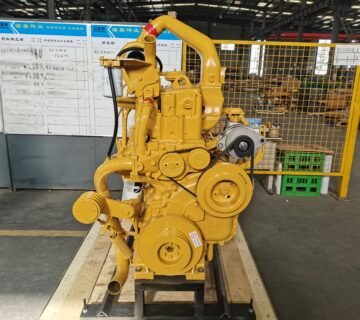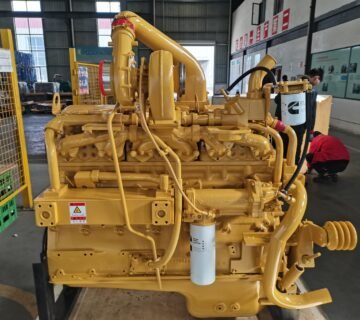How Cummins' Redundant Systems Become Your Emergency Power Lifeline
When the grid flickers and fails – whether from a hurricane’s fury, a deep freeze crippling infrastructure, or an unexpected technical fault – the cost of downtime isn’t just financial; it can be catastrophic. Lives hang in the balance in hospitals, critical data vanishes in server farms, and essential services grind to a halt. This is where Cummins generators transcend being mere machines; they become engineered lifelines. The cornerstone of their legendary generator reliability, especially during the most demanding emergencies, lies in a philosophy deeply embedded in their design: redundant systems.

Cummins understands that true resilience isn’t about a single, flawless component – it’s about anticipating failure and having intelligent backups ready to seamlessly take over. This multi-layered approach to redundancy ensures continuous backup power systems when you absolutely cannot afford an interruption. Let’s delve into the critical areas where Cummins builds in this vital safety net:
- Power Generation Redundancy (N+1 Configuration & Parallel Operation): The heart of any generator is its Cummins engine and alternator. For the most critical applications, Cummins offers systems designed with an “N+1” philosophy. This means if your facility requires ‘N’ generators to handle the load, you install ‘N+1’. If one unit fails or needs maintenance, the remaining units automatically pick up the slack, maintaining full power without a blip. Furthermore, advanced Cummins generator parallel systems allow multiple units to operate together synchronously, sharing the load efficiently. This not only provides redundancy but also offers scalability and enhances fuel efficiency during normal operation. The sophisticated Cummins PowerCommand™ control system manages this complex orchestration flawlessly.
- Control System Redundancy (The Intelligent Nerve Center): The generator controller is the brain. A single point of failure here could be disastrous. Cummins addresses this with redundant control modules and dual-processor controllers in critical models. If the primary controller detects a fault or fails, a secondary controller instantly assumes command, maintaining monitoring, start/stop sequences, and load management. This automatic transfer switch (ATS) integration is also designed with redundancy in mind, ensuring seamless transition from utility to generator power and back, even if a control element within the ATS path falters. Remote monitoring capabilities via platforms like Cummins PowerCommand™ Cloud provide an additional layer of oversight, alerting operators to potential issues before they escalate into failures.
- Fuel System Redundancy (Keeping the Lifeline Flowing): An engine is useless without fuel. Cummins employs several strategies here. Dual fuel line systems can be implemented, providing an alternative path if one line becomes blocked. For ultimate security, dual fuel tank setups with automatic switching ensure an uninterrupted supply if the primary tank is depleted or compromised. Fuel polishing systems continuously clean and recirculate fuel, preventing clogs and injector fouling – a common cause of generator failure, especially in standby units. Cold weather starting kits, incorporating block heaters and battery warmers, are another form of operational redundancy, ensuring reliable starts in extreme conditions that could cripple a standard system.
- Cooling & Starting Redundancy (Battling Overheating and Startup Failures): Overheating shuts engines down fast. Cummins generators often feature dual coolant pumps or oversized single pumps with backup capabilities. High-temperature shutdown overrides (with manual reset only after investigation) protect the engine, but the redundant cooling design aims to prevent reaching that point. Similarly, dual starting systems – featuring redundant starter motors or backup battery banks with automatic chargers – are crucial. A single weak battery in freezing temperatures can spell disaster; redundancy here is a fundamental emergency power solution.
Beyond Components: The Cummins Engineering Ethos
This focus on redundancy isn’t just bolting on extra parts; it’s integral to Cummins’ engineering DNA, honed through decades of powering mission-critical operations worldwide, from data centers and hospitals to military installations and telecommunications networks. It leverages Cummins engine reliability as a foundation but builds layers of protection above it.
Why This Redundancy Matters for Your Emergency Planning:
Guaranteed Uptime: Redundancy directly translates to achieving “five-nines” (99.999%) generator uptime or higher, minimizing the risk of catastrophic failure during an outage.
Reduced Risk: Mitigates single points of failure, protecting your operations, assets, and people.
Enhanced Resilience: Ensures your backup power systems can weather prolonged emergencies or cascading failures.
Peace of Mind: Allows facility managers and stakeholders to sleep soundly, knowing their critical power has multiple layers of protection.
Protects Investment: Maximizes the value of your Cummins generator investment by ensuring it performs when needed most.

Conclusion: Redundancy Isn’t Optional, It’s Essential
In the high-stakes world of emergency power, “good enough” isn’t sufficient. Cummins’ commitment to redundant systems throughout their generator designs – from the core Cummins engine and PowerCommand™ controls to fuel delivery, cooling, and starting mechanisms – is what sets them apart. It transforms a generator from a potential liability into a truly reliable fortress against power loss. When the lights go out and the pressure mounts, it’s this meticulous, layered approach to generator reliability that keeps critical operations running, safeguards lives, and protects invaluable assets. Choosing Cummins means choosing a power partner engineered with failure in mind, so your systems never have to.





No comment